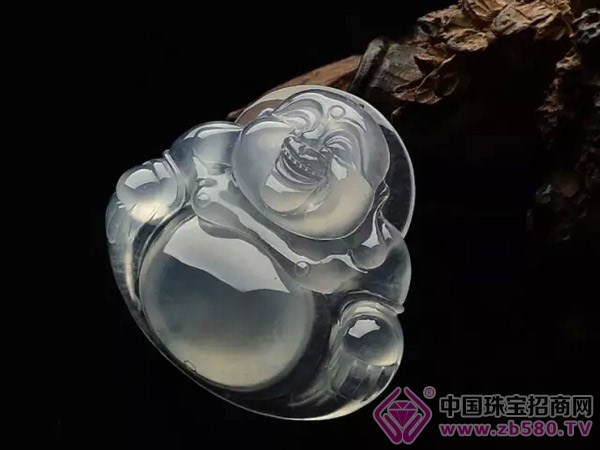There are many kinds of jade colors, of which red dragonfly is the abbreviation of red jade, which refers to jadeite with red color. Red emerald is a common type of jade. Its color tone includes the color shifting from the center of red, including yellow red, orange red, maroon, bright red, etc. The hue has a certain depth change, some light, some shallow .
The color of the red emerald is not the color of the jadeite mineral crystal itself, but the color formed by the foreign iron element entering the gap between the jade crystals. It belongs to the secondary color of the jadeite, so the red color of the jadeite is generally located below the epidermis or the epidermis of the jadeite raw material. s position. Because iron elements are more difficult to enter the jadeite with good water and high density, the jadeite with good water is generally less red and bright. In other words, most of the red jadeite water will not be very good, the color of the good red jade is generally poor, the water is good and the color is good. The red jade is mostly in the form of beans, and it is less common, and the red ice is the best.

What is red jade
Red jade is a kind of jade with red hue, which is mainly called "red ç¿¡" in red, and blush in red. The best color of red jade is close to the color of the cocks on the top of the animal's chicken head. The jadeite is called "cocknut red". Its color is bright and bright. If such red jade jade is delicate and transparent, it is the best in red jade. At first sight, you can meet and not ask.
The cause of the formation of red jade
Red jade is mainly found on the epidermis of jade raw materials, or distributed along the fissures in jade. Under the action of weathering, river bed transportation, geological liquid immersion, etc., the natural iron elements enter the gap between the crystals of the jade or the jade cracks, and then the ferrous ions become trivalent iron ions under chemical action, thus forming various red Tune.
Under the microscope, it can be seen that the red hue is almost infiltrated into the jadeite along the jadeite mineral crystals or cleavage lines, and the red is intensively distributed in the form of a network. The location where the iron is immersed is red in the gap between the crystals, and the rest is very light. From this point of view, the red jade red is not the color of the jade mineral crystal itself, but belongs to the foreign color, the jewellery discipline is called "the secondary color of jade."
The meaning of red emerald
Red is the festive and auspicious color of Chinese traditional culture. It means developed, strong, masculine, healthy and energetic, symbolizing love and hope. The red emerald color is mainly yellowish red and brown, with less red and blood red. Red emerald is the first choice for the creation of pretty color carvings, which can be used for antique or individual sculptures.
Red jade shopping
When many people buy red jade, it is easy to "see only the color, not see the species", that is to say, seeing the red color is good, it ignores the water. The water of the jade determines the color of the red jade, the moistness and fullness of the meat. The water is poor, the red is suspended on the surface of the jade, the color is superficial and blunt; the water is good, the meat is transparent and moist, the color is diffused, the mapping is good, the color is vivid and vivid, and it is energetic and intriguing.
What is burning red jade?
Burning red jade, as its name implies, is a jadeite that has been red by artificial burning. Compared with natural red peony, the value of burning red jade is not great. The main points of burning red jade and natural red scorpion are as follows:
1. Look at the color boundary. The natural jade color is related to other primary colors (white, green or purple), especially in the place where the red dragonfly is, there will be a clear boundary; the "burning red" jade color boundary is not clear, which is a gradual transition relationship;
2, look at the degree of color. Natural ochre jade is often darker in color, brownish brown or maroon, with varying colors and layering; the color of "burning red" jade is often bright red, bright, simple, and layerless;
3. Look at transparency. Natural jade ochre parts will be relatively transparent, especially the boundary area will be better. The transparency of the different colors of "burning red" jade does not change much, and the red part sometimes has poor transparency.
4. Look at the smoothness of the surface. The natural ochre jade is polished and smooth, and the surface is smooth and bright; the surface of the "burning red" jade will have fine dry cracks, the smoothness is reduced, and the reflection is weak.
Leisure Wear,Outer Wear,Suede Outer Jacket,Long Sleeve Outer Wear
SHAOXING YINBO IMP&EXP CO.,LTD , https://www.yinbotex.com